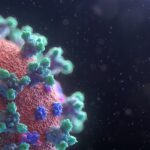
One of the main strategies in controlling the COVID-19 pandemic is mass population testing for SARS-COV-2 in order to identify positive cases. This includes symptomatic and asymptomatic positive cases (Dental Elf – 12th October 2020). Real-time reverse transcription-polymerase chain reaction (rRT-PCR) has a high specificity and is gold standard for the diagnosis of SARS-CoV-2. Samples are currently provided through nasopharyngeal swabs however this method requires a certain degree of patient compliance therefore alternative samples sites need to be considered. Studies investigating the efficacy of detecting SARS-CoV-2 through rRT-PCR from different samples is of current interest.
Methods
The Preferred Reporting Items for Systematic Review and Meta-Analyses (PRISMA) were used to inform the methodology of this systematic review. Studies which evaluated saliva as a sample for SARS-CoV-2 detection were included. PubMed, Cochrane, EBSCO, Elsevier and Medline were the databases searched. The grey literature was not included. No quality assessment of included studies was conducted.
Results
- 22 studies were included in this systematic review comprising 2 case reports, 17 case series and 3 ‘massive screenings’.
- All studies compared saliva with nasopharyngeal swabs for SARS-CoV-2 diagnosis.
- A total of 7630 patients were tested and of these, 862 were positive for SARS-CoV-2.
- Different methods of saliva collection were undertaken by different studies such as drooling, spitting, coughing or their combinations and saliva swabs. Moreover, different studies provided their participants with differing instructions prior to saliva collection such as no eating, drinking or brushing their teeth, no tobacco etc.
- 11 studies reported sensitivity (range 20-97%; mean 79.47%) and specificity (range 66-100%; mean 90.48%).
- Higher viral loads were reported in nasopharyngeal than saliva samples. Additionally, higher cycle threshold values were reported in saliva samples than nasopharyngeal swabs.
Conclusions
The authors concluded:
…saliva might be an appropriate, fast, painless, simple and non-invasive sample for SARS-CoV-2 detection, making it ideal for massive screening of SARS-CoV-2 infection
Comments
The quality of studies included in this systematic review had a low level of evidence hence further high-quality research is needed to inform clinical practice/population testing. Additionally, there was no quality assessment or heterogeneity assessment conducted by the authors. Therefore, there are limited conclusions which can be drawn from this systematic review. Further searches of the grey literature may have highlighted current trials that could have been of relevance. It is of interest to determine the efficacy of SARS-CoV-2 detection in both saliva and nasopharyngeal swab samples however there is limited evidence at present.
Links
Primary paper
Cañete MG, Valenzuela IM, Garcés PC, Massó IC, González MJ, Providell SG. Saliva sample for the massive screening of SARS-CoV-2 infection: a systematic review. Oral Surg Oral Med Oral Pathol Oral Radiol. 2021;S2212-4403(21)00075-4.
Other references
Dental Elf – 12th October 2020
Photo Credits
Photo by Fusion Medical Animation on Unsplash
